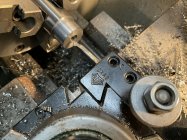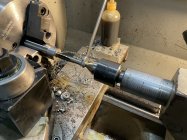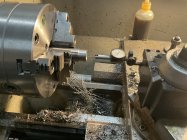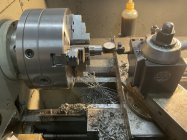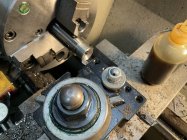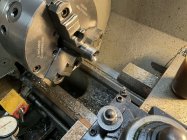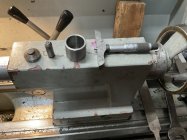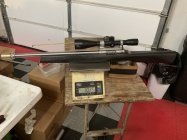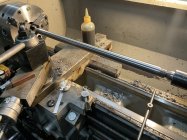I have found my chambering methods to be ever evolving. I’m always tweaking them, attempting to get the best final product possible.
When I first started chambering I just used a piloted finish reamer for the entire chamber and was satisfied with my results. I have slowly transitioned into preboring the chambers to save time on chambering and wear on the reamer
Recently, I have been boring a hole just under shoulder diameter to a 1.25” depth. (about as far as the bushing can still enter the bore)
Then I chamber the barrel to final depth.
I have been thinking that if I was to prebore to the shoulder depth, the reamer should find center in the bored hole. In theory I believe I could just remove the pilot and the reamer would continue straight on the hole that was bored?
Is anyone cutting chambers this way. I’m always interested hearing what works for others.
When I first started chambering I just used a piloted finish reamer for the entire chamber and was satisfied with my results. I have slowly transitioned into preboring the chambers to save time on chambering and wear on the reamer
Recently, I have been boring a hole just under shoulder diameter to a 1.25” depth. (about as far as the bushing can still enter the bore)
Then I chamber the barrel to final depth.
I have been thinking that if I was to prebore to the shoulder depth, the reamer should find center in the bored hole. In theory I believe I could just remove the pilot and the reamer would continue straight on the hole that was bored?
Is anyone cutting chambers this way. I’m always interested hearing what works for others.










